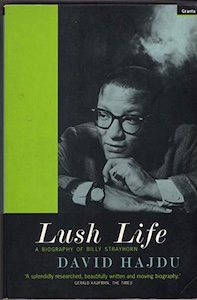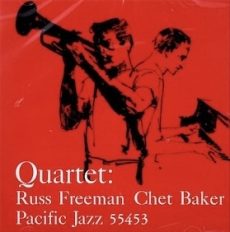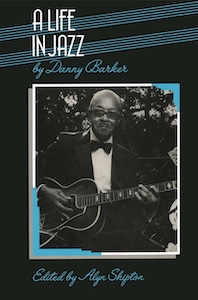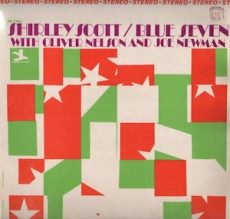
On The Bookshelf
Lush Life: A Biography Of Billy Strayhorn
Billy Strayhorn, one of the greatest composers in the history of American music, the creator of a body of work of standards like Take the A Train. Yet, as a composer with no stage presence many see him as overshadowed by his friend and collaborator Duke Ellington, with whom he worked with for the two and a half decades.
The songwriter and arranger was an integral component of the Harlem Renaissance and the evolution of jazz. Lush Life is a vibrant and absorbing account of the Strayhorn’s life and the times that other jazz musicians led in Harlem and Paris. While composing some of the most gorgeous American music of this century, Strayhorn labored under a complex agreement whereby Ellington took the bows for his work.
Fifty-one years from the date of his birth, Billy Strayhorn transitioned due to cancer and alcohol abuse. The small, shy black composer carried himself with singular style and grace as one of the few jazzmen to be openly homosexual. This biography has sparked an enthusiastic revival of interest in Billy Strayhorn’s work and is already acknowledged as a jazz classic.
Lush Life: 1996 | David Hajdu
Granta Publications

Requisites
Quartet ~ Russ Freeman and Chet Baker | By Eddie Carter
It had been some time since I last enjoyed Russ Freeman’s piano work, so this morning I chose an excellent collaboration featuring him and trumpeter Chet Baker from my library. Quartet (World Pacific Records, PJ-1232) hit the stores in 1957 and was the eleventh album Freeman and Baker recorded together. The album showcases six original tunes alongside two standards, and they are supported by the outstanding rhythm section of Leroy Vinnegar on bass and Shelly Manne on drums. The copy of this album that I own is a King Record Company Japanese mono reissue (Pacific Jazz GFX-3104).
The first side opener, Love Nest by Otto Harbach and Louis A. Hirsch begins at a brisk pace, with Chet on muted trumpet during the lively melody, which continues into a spirited opening statement. Russ gets the next nod and delivers an energetic reading. Leroy follows up with a swinging interpretation, then Chet and Shelly engage in a brief exchange before the closing chorus returns. Fan Tan, the first of six originals by Russ Freeman, slows the pace to midtempo for the quartet’s theme. Freeman is afforded plenty of room to shape his phrases in the opening statement. Baker is back on the open horn and maintains a laid-back vibe as he effortlessly swings to the closing chorus and ending.
Summer Sketch begins with a gentle piano introduction. Chet Baker’s trumpet playing throughout the track is both poetic and tender, with each note radiating romantic beauty, softly guiding the group to a smooth, unified finish. An Afternoon At Home ends the first side with the rhythm section’s inviting introduction, allowing Baker to glide through the opening chorus at a leisurely, relaxed pace. Freeman’s lead solo is as enjoyable as spending a leisurely afternoon with friends. Then, Vinnegar takes the spotlight next for a captivating solo. Baker has the last word with a charming presentation, before the quartet brings the tune to a satisfying close.
Say When starts Side Two with the quartet’s spirited melody. Chet leads the way with an exciting opening statement. Russ soars into the following presentation, then Shelly swings with great force in a brief, exhilarating closing reading before the theme’s reappearance and the group’s exit. Lush Life by Billy Strayhorn is one of the enduring favorites among jazz standards. The song begins with Freeman’s sensitive introduction, gently segueing to Baker’s rich tone as he introduces the tender theme. The pianist’s solo possesses a sad, reflective beauty, culminating in the trumpeter’s tender and thoughtful finale.
Amblin is a slow blues, introduced by the trio’s soulful introduction, segueing to the leader’s down-home melody. Chet opens with a solo that’s thoughtfully crafted and effortlessly delivered. Russ continues letting each verse glide effortlessly next. Leroy wraps it up with plenty of heart, ahead of the quartet’s theme reprise and climax. Hugo Hurwhey takes off with a short introduction, preceding the ensemble’s upbeat theme. Baker hits an ideal groove in the opening statement. Freeman takes the reins next with a robust reading, then Vinnegar, Manne, and Freeman culminate the solos in a vigorous exchange with Baker, leading to the melody’s restatement and conclusion.
Richard Bock produced Quartet, but the identity of the recording engineer is unidentified. However, this King Record Company reissue possesses outstanding audio quality, with an excellent soundstage that brings the foursome into your listening room with impressive clarity and presence. Whether you’re a Russ Freeman or Chet Baker fan, or are just discovering the discography of either musician, I emphatically recommend and invite you to pick up Quartet on your next trip to the record store. The album is a stellar showcase for both musicians and would make a welcome addition to any jazz library!
~ Lush Life – Source: JazzStandards.com
© 2025 by Edward Thomas Carter
>
More Posts: choice,classic,collectible,collector,history,instrumental,jazz,music,piano,trumpet

On The Bookshelf…
THE LAST HOLIDAY: A MEMOIR | GIL SCOTT-HERON
From a humble childhood divided between his grandmother in Jackson, Tennessee and his mother in New York City, Gil Scott Heron became one of the most uncompromising and fearless truthtellers of his generation.
His memoir provides a remarkable glimpse into his life and times, from the young man who gained entry into New York’s prestigious Fieldstone School, finding a path out of poverty even as his mother was being hospitalized in a diabetic coma, to the bill budding activist who led his university in a strike to demand better student healthcare.
As he comes of age as a man and as an artist, he provides keen observations on the civil rights movement and the tumultuous changes of the 1960s.
The Last Holidday, published by Grove Press on Martin Luther King Jr. Day, January 16, 2012 in honor of the historic tour in which he participated in the fall of 1980. It serves as both the climax of the book and the inspiration for the title.
His friend Stevie Wonder decided to use his Hotter Than July tour to raise popular support for a national holiday honoring the great civil rights leader, and he invited Scott-Heron to join him. Thus, the book is not just a tribute to Gil’s activism but also offers highly personal recollections of Wonder, Clive Davis, and other musical peers and acquaintances, as well as insights into the music industry, the Civil Rights movement, modern America, governmental hypocrisy, and our wider place in the world.

On The Bookshelf
A Life In Jazz | Danny Barker
Since the 1950s, when Nat Hentoff and Nat Shapiro published Heah Me Talkin’ to Ya, an oral history of jazz which drew heavily on Danny Barker’s reminiscences, jazz buffs have waited impatiently for Barker’s full account of his life in jazz.
Danny Barker was born January 13, 1909 when jazz was still in its infancy, and by the time of his death he was known as both a master of the idiom and a guardian of its history. Storyteller, researcher, songwriter, performer, and mentor, Barker was a true griot – an elder statesman of jazz and an international representative of New Orleans and African American culture.
In more than 60 years as a working musician, he followed the evolution of jazz from its New Orleans roots to mainstream success during the swing era to canonization as America’s first wholly original art form. In his career as a songwriter, which yielded the hit Don’t You Feel My Leg, Barker combined traditional song forms with sly humor about sex and human nature.
More than any other jazz artist, he worked to document the music’s history and to tell the stories of its people. A Life in Jazz, first published in 1986 and edited by British jazz scholar Alyn Shipton, captures the breadth of Barker’s knowledge and the scope of his vision as a storyteller.
His carefully crafted set pieces range from hilarious to harrowing, and he shares memories of jazz greats such as Jelly Roll Morton, Cab Calloway, and Dizzy Gillespie. Barker’s prose reflects the freedom and creativity of jazz while capturing the many injustices, both casual and grand, of life as a Black man in mid-century America.
This illustrated edition of A Life in Jazz brings Barker’s autobiography back into print by the Macmillan Press Ltd., accompanied by more than 100 images that bring his story to life. Gwen Thompkins, host of public radio’s Music Inside Out, reflects on Barker’s legacy in her introduction, and the complete discography and song catalog showcase the breadth of Barker’s work.
Danny Barker died on March 13, 1994. Through his struggles, triumphs, escapades, and musings, A Life in Jazz reflects the freedom, complexity, and beauty of this thoroughly American, Black music tradition.

Requisites
Blue Seven ~ Shirley Scott With Joe Newman and Oliver Nelson | By Eddie Carter
I was still in a jazz organ mindset after listening to Jimmy Smith when I decided to explore a lesser-known, underappreciated gem by Shirley Scott. Blue Seven (Prestige PR 7376/PRST 7376) was recorded in 1961, yet remained on the shelf until its 1965 release. For her fourteenth album, Shirley’s working with an outstanding ensemble: Joe Newman on trumpet, Oliver Nelson on tenor sax, George Tucker on bass, and Roy Brooks on drums. Together, they create a jazz session that’s laid-back and refined, filled with understated groove and energy. Unlike some organists who favor a bold, party-heavy approach, Shirley brings a softer, blues-influenced touch, letting her organ blend with the ensemble rather than dominating it. My copy of this album is the 1965 U.S. stereo release.
Side One opens with the title tune, Blue Seven by Sonny Rollins. George and Roy’s soulful, bluesy introduction eases into the quintet’s mellow theme. Joe opens gently and evolves into a warm, inviting interpretation. Oliver explores intriguing avenues in the following reading. Shirley showcases her expressive touch and impressive technique until the group returns for the finale. Don’t Worry ‘Bout It Baby, Here I Am by Shirley Scott starts on a bright note with the horns merging into the rhythm section’s cheerful melody. Scott opens the first solo with some good, honest soul. Nelson follows with a relaxing performance, then Newman delivers a soothing interpretation that gradually builds to a few final thoughts by Scott before the song ends.
Nancy (With The Laughing Face) by Phil Silvers and Jimmy Van Heusen gently shifts the album’s pace to a tender ballad. Shirley’s delicately gentle melody creates a soft, inviting backdrop for both horns. She then caresses each note of the song’s only solo with elegance and deep emotion, leading to the ensemble’s touching ending. Wagon Wheels by Billy Hill and Peter DeRose was the title tune of the 1934 Western film. Newman steps forward with his muted trumpet, guiding the ensemble through the easygoing melody. Nelson makes a brief, tasteful entrance before Newman continues the mellow mood. Nelson follows with smooth, unhurried lines, then Scott delivers a reading as comforting as a hearty, satisfying meal, before the quintet returns for the closing chorus and gentle fadeout.
The album closer is Give Me The Simple Life, by Rube Bloom and Harry Ruby, kicking off with the quintet’s bright, upbeat melody. Oliver steps forward first to deliver a spirited and swinging interpretation. Joe maintains the momentum in an energetic statement, and then Shirley’s robust performance leaves a lasting impression. All three soloists trade upbeat ideas, leading to the ensemble’s closing chorus. Esmond Edwards supervised the album, and Rudy Van Gelder was behind the dials. The album’s excellent sound quality transports the listener into the heart of the quintet’s lively interaction, with warm, crystal clear acoustics that create the sensation of a live performance happening right in your listening room.
If you love jazz groups that feature the Hammond organ up front and blend the lively drive of hard bop with the soulful rhythms of soul jazz, I offer for your consideration, Shirley Scott’s Blue Seven, the next time you’re out record shopping. This album is a delightful listen, filled with inventive solos and tight group interplay. You’ll experience everything from the upbeat energy of Don’t Worry ‘Bout It Baby, Here I Am and Give Me The Simple Life, to the relaxed swing of Blue Seven and Wagon Wheels, as well as the tender emotion of Nancy (With The Laughing Face). After you spin it on the turntable, it’s likely to earn a permanent spot among the favorites in your library, encouraging you to return to it again and again!
~ Give Me The Simple Life, Nancy (With The Laughing Face), Wagon Wheels – Source: Wikipedia.org
p>© 2025 by Edward Thomas Carter
More Posts: choice,classic,collectible,collector,history,instrumental,jazz,music,organ,saxophone,trumpet



